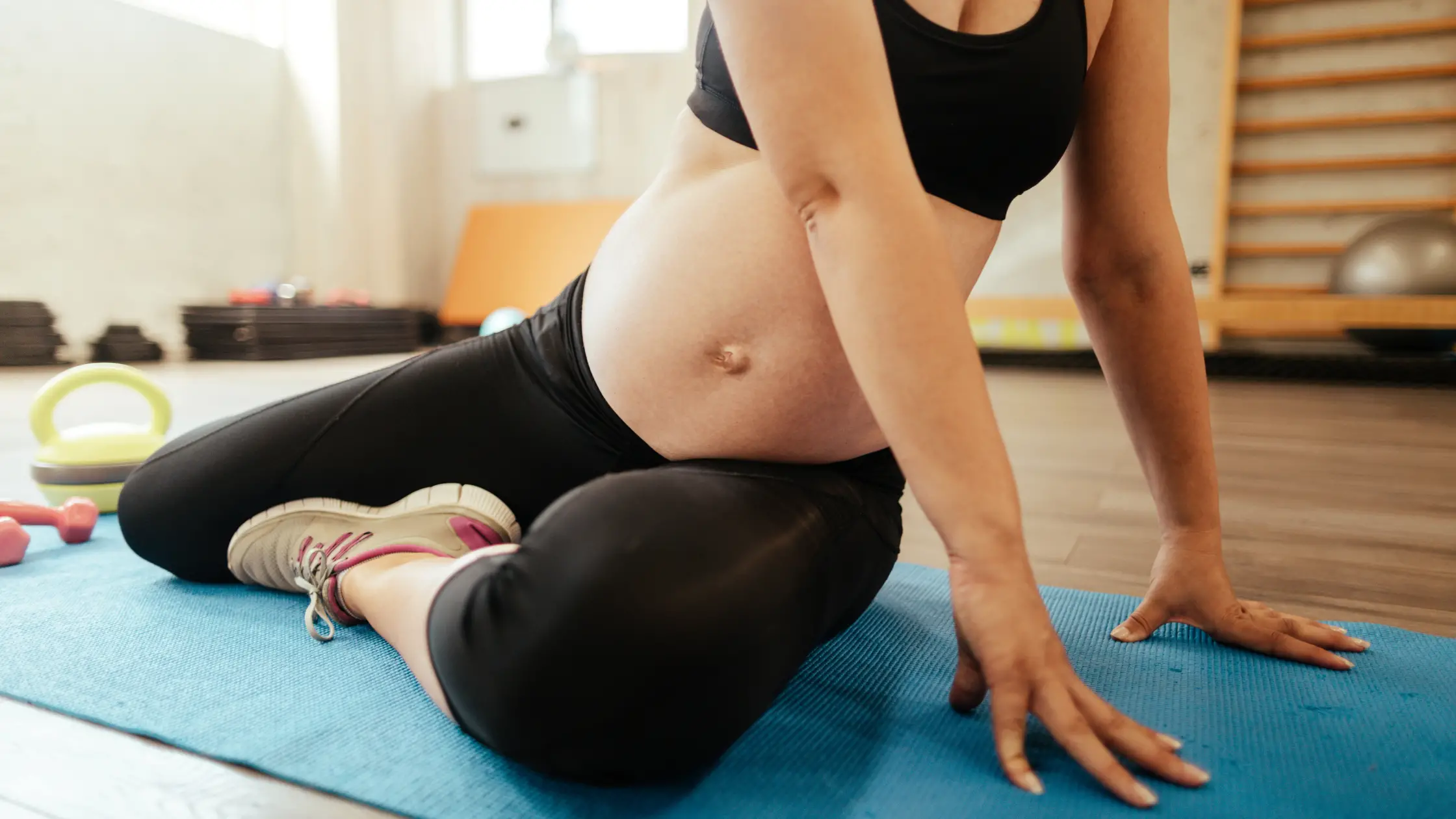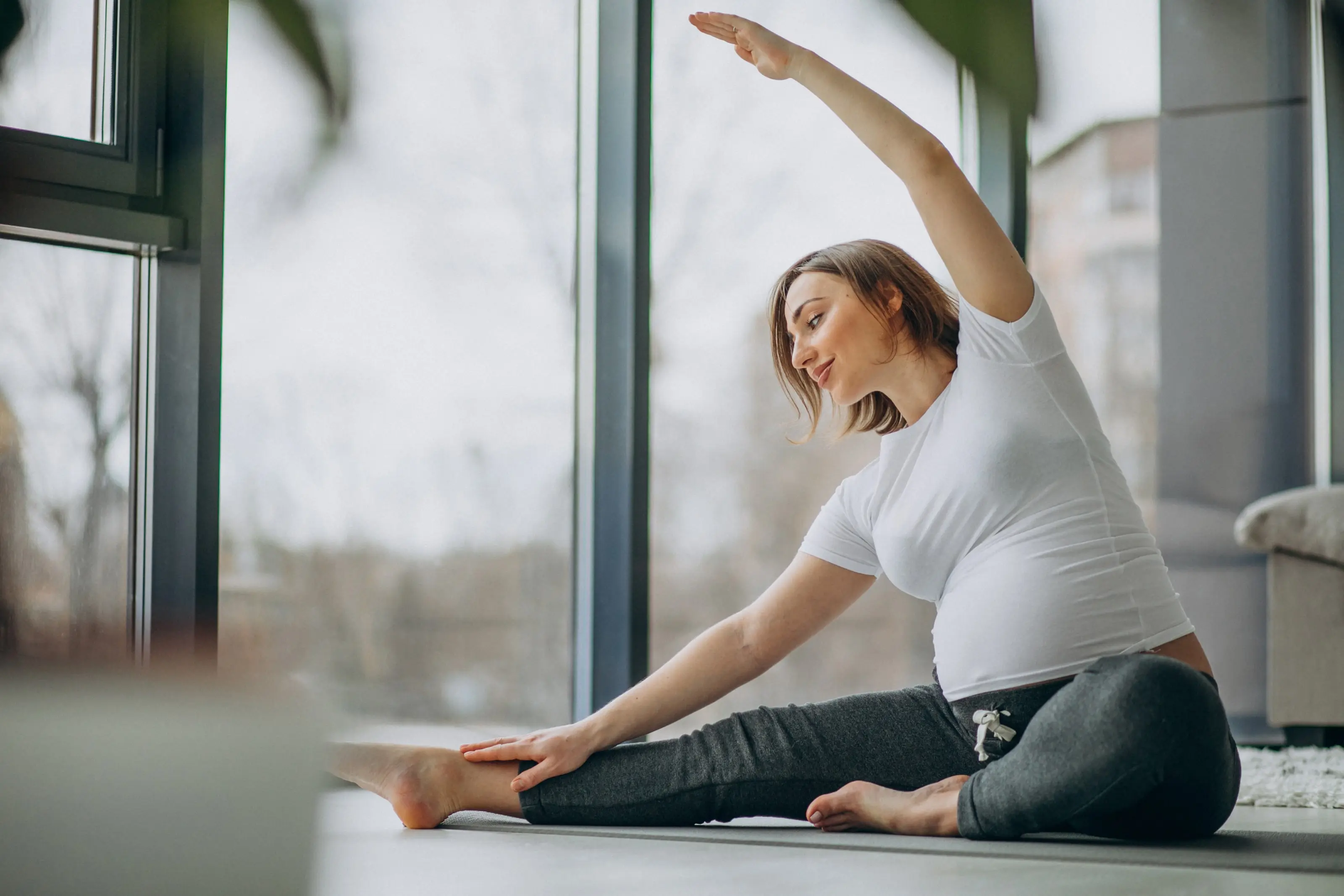
Pregnancy is a transformative journey filled with joy, anticipation, and a fair share of uncertainties. As an expectant mother, you might find yourself questioning every decision, especially those related to your health and well-being. One such concern often revolves around exercising during pregnancy. Is it safe? What exercises are recommended? How much is too much? This comprehensive guide aims to answer all these questions and more, providing you with the knowledge you need to make informed decisions about the best pregnancy exercises around.
Is it Safe to Exercise During Pregnancy?
Yes, for most women, it is safe to exercise during pregnancy. In fact for healthy pregnant women, physical activity during pregnancy has many benefits and is recommended by healthcare professionals. Regular exercise can help manage weight gain, improve mood, reduce pregnancy-related discomfort, and prepare the body for labor and delivery.
However, it’s important to note that every pregnancy is unique, and what’s safe for one woman may not be safe for another. Before starting or continuing an exercise regimen during pregnancy, it’s crucial to consult with your healthcare provider. They can provide personalized advice based on your health history and current condition.
There are also certain situations where exercise during pregnancy may not be advised. These include certain medical conditions, such as heart or lung disease, a weak or incompetent cervix, pregnancy complications, risk factors for preterm labor, bleeding or spotting, low placenta, or a history of miscarriages or premature births.
Even if exercise is generally safe for you, it’s important to listen to your body and modify or stop exercises if you feel any discomfort. It’s also important to stay hydrated, avoid overheating, and avoid exercises that involve lying flat on your back after the first trimester, contact sports, and activities with a high risk of falling or abdominal injury.
In conclusion, while exercise during pregnancy is generally safe and beneficial, it’s always best to consult with your healthcare provider to ensure that your exercise program and routine are safe for both you and your baby.
The Importance of Exercise During Pregnancy
Exercise during pregnancy isn’t just safe; it’s highly beneficial and recommended for most pregnant women. Regular physical activity can help manage weight gain, improve mood, reduce pregnancy-related discomforts such as back pain and swelling, and prepare the body for labor and delivery.
Benefits for the Mother
For the mother, regular exercise during pregnancy can lead to a host of benefits. It can help manage weight gain within a healthy range, reducing the risk of gestational diabetes and preeclampsia. It can also improve mood and energy levels, reduce pregnancy-related discomforts such as back pain and swelling, and prepare the body for labor and delivery by strengthening all the muscles and improving endurance.
Benefits for the Baby

For the baby, maternal exercise can lead to a healthier heart, lower BMI, and even boost brain health. Studies have shown that babies born to mothers who exercised during pregnancy have better motor skills than those who didn’t. They also tend to be more active and have a healthier weight.
Safety Precautions for Pregnancy Exercises
Before starting any exercise regimen during pregnancy, it’s crucial to consult with your healthcare provider. They can provide personalized advice based on your health history and current condition. It’s also important to listen to your body and modify or stop exercises if you feel any discomfort.
How Often Should You Exercise When Pregnant?
The amount of exercise recommended during pregnancy can vary depending on your fitness level before pregnancy, but a general guideline provided by the American College of Obstetricians and Gynecologists (ACOG) suggests that pregnant women should aim for at least 150 minutes of moderate-intensity exercise each week. This moderate-intensity aerobic activity for active women can be broken down into 30-minute workouts on most if not all, days of the week.
Moderate-intensity exercise means you’re active enough to raise your heart rate and break a sweat, but still able to carry on a conversation. This physical activity could include activities like brisk walking, swimming, or prenatal yoga.
It’s also important to incorporate both aerobic and strength-training exercises into your routine. Aerobic exercises, like walking or swimming, help improve cardiovascular health, while strength-training exercises, like prenatal Pilates or yoga, can help strengthen muscle tone in the muscles needed for labor and delivery.
However, it’s crucial to listen to your body and adjust your exercise routine as needed. Some days you might feel up for a 30-minute walk, while other days you might only feel up for a few gentle stretches. Both these cardiovascular exercises are beneficial and contribute to a healthy pregnancy.
Remember, every pregnancy is unique, so what works for one person may not work for another. Always consult with your healthcare provider before starting any new exercise regimen during pregnancy. They can provide personalized advice based on your health history and current condition.
Recommended Pregnancy Exercises
Here are some exercises that are generally safe and beneficial for pregnant women:
Walking
Walking is a low-impact exercise that can be continued throughout the entire pregnancy. It’s easy to fit into your daily routine, requires no extra weight and no special equipment, and can be done anywhere.
Prenatal Yoga
Prenatal yoga can do core exercises that help improve flexibility, reduce stress, and teach useful breathing techniques for labor. It also focuses its pelvic floor exercises on poses that strengthen the front pelvic floor muscles, and improve posture.

Swimming for Pregnant Women
Swimming and water workouts put little stress on the joints while providing a good cardiovascular workout. The buoyancy of the water can also provide relief from swelling calf pain, muscle weakness, and discomfort.

Prenatal Pilates
Prenatal Pilates can help strengthen the core, improve posture, and enhance overall upper body strength. It also focuses on breathing and alignment, which can be beneficial during labor.

Low-impact Aerobics
Low-impact aerobics classes, especially classes designed for pregnant women, can help keep the heart and lungs strong without putting too much stress on the joints. These classes often include a mix of cardio, strength training, and flexibility exercises.

Best Exercise Routine by Trimester
First Trimester
- Monday: 30 minutes of walking
- Tuesday: Light strength training
- Wednesday: Rest day
- Thursday: 30 minutes of swimming
- Friday: Yoga for beginners
- Saturday: 30 minutes of low-impact aerobics
- Sunday: Rest day
Second Trimester
- Monday: 30 minutes of walking
- Tuesday: Prenatal Pilates class
- Wednesday: Rest day
- Thursday: 30 minutes of swimming
- Friday: Prenatal yoga class
- Saturday: 30 minutes of low-impact aerobics
- Sunday: Rest day
Third Trimester
- Monday: 20 minutes of walking
- Tuesday: Gentle prenatal yoga
- Wednesday: Rest day
- Thursday: 20 minutes of swimming
- Friday: Gentle prenatal Pilates
- Saturday: 20 minutes of walking
- Sunday: Rest day
These routines are designed to provide a balance of cardiovascular exercise, strength training, and flexibility work. However, they should be adjusted based on your comfort level and any advice from your healthcare provider. Always listen to your body and modify or stop exercises if you feel any discomfort.
Exercises to Avoid During Pregnancy
While exercise is beneficial, some activities pose risks during pregnancy. These include any exercises that involve lying flat on your back after the first trimester, contact sports, and activities with a high risk of falling or abdominal injury.
Tips for Staying Motivated
Staying motivated to exercise during pregnancy can be challenging, especially with the physical changes and discomfort that come with pregnancy. Setting realistic goals, mixing up your routine, and finding a workout buddy can help. Remember, even a short walk or a few stretches can be beneficial.
When to Stop Exercising
While exercise during pregnancy is generally safe and beneficial, there are certain warning signs and symptoms that should not be ignored. If you experience any of the following, it’s important to stop exercising and consult your healthcare provider immediately:
Pain
While some discomfort can be expected, especially as your body changes, any sharp or persistent pain should be taken seriously. This could be a sign of an injury or other medical issue.
Dizziness or Fainting
Dizziness can be a sign of low blood pressure or dehydration, both of which can be dangerous during pregnancy. If you feel dizzy or faint, stop exercising, rest, and hydrate.
Shortness of Breath
It’s normal to breathe harder during exercise, but if you’re struggling to catch your breath or feeling winded even with light activity, it’s time to stop and rest.
Chest Pain
Any chest pain or discomfort is a serious concern and should be addressed immediately.
Contractions
Regular, painful contractions could be a sign of preterm labor. If you’re experiencing contractions that don’t stop after resting, contact your healthcare provider.
Decreased Fetal Movement
If you notice a decrease in your baby’s movement, stop exercising and contact your healthcare provider.
Vaginal Bleeding or Fluid Leakage
Any vaginal bleeding or fluid leakage during pregnancy is a potential concern and should be reported to your healthcare provider immediately.
Remember, as pregnancy progresses it’s important to listen to your body and not push yourself too hard. Pregnancy is not the time to strive for personal fitness records. Instead, the goal should be to maintain a healthy level of physical activity that benefits both you and your baby. Always consult with your healthcare provider if you have any concerns about your exercise program or routine during pregnancy.
Conclusion
Exercise during pregnancy can provide numerous benefits for both the mother and baby. However, it’s essential to stay safe and listen to your body. Remember, every pregnancy is unique, so what works for one person may not work for another. Always consult with your healthcare provider before starting any new serious exercise program or regimen.
Frequently Asked Questions
Can I start exercising during pregnancy if I wasn't active before?
Are there any signs that I should stop exercising?
Can I continue running during pregnancy?
How much should I exercise during pregnancy?
Can exercise cause miscarriage?
All Things Childcare strives to provide research-based information. While the contents of this article have been fact-checked, we encourage our readers to seek actual medical advice from health professionals.



Leave a Reply